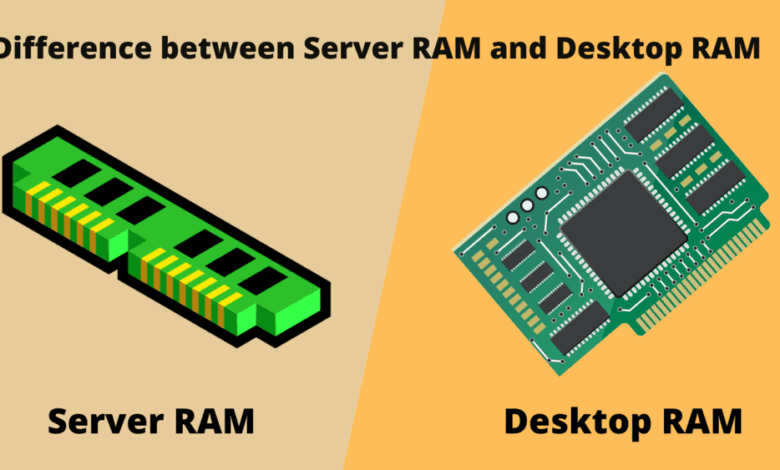Demystifying the Differences: Server Memory vs. Desktop Memory

When it comes to choosing the right type of memory for your computer, the options can be overwhelming. In particular, the differences between server memory and desktop memory can be confusing to many people. While both types of memory are used to store information on a computer, they differ in terms of their performance, compatibility, and price. Choosing the right type of memory for your computer can make a big difference in terms of its speed and performance. In this post, we’ll explore the differences between server memory and desktop memory, and help you understand which type of memory is best for your specific needs. Whether you’re a computer enthusiast or a business owner looking to upgrade your servers, this guide will provide you with the knowledge you need to make an informed decision.
Introduction to Server Memory and Desktop Memory
When it comes to understanding the distinctions between server memory and desktop memory, it’s essential to comprehend the unique roles and requirements of each type. Server memory, also known as ECC (Error-Correcting Code) memory, is specifically designed to meet the demanding needs of servers and data centers. It offers higher reliability and error detection capabilities, crucial for maintaining data integrity in mission-critical applications.
On the other hand, desktop memory, often referred to as non-ECC memory, caters to the needs of personal computers and consumer electronics. While desktop memory may offer more cost-effective solutions for individual users, it lacks the rigorous error-checking features found in server memory.
Understanding the role of memory in computing
Memory plays a crucial role in the world of computing, serving as the backbone for storing and accessing data quickly and efficiently. When it comes to server memory versus desktop memory, the key disparities lie in their specific functionalities and requirements.
In computing, memory is essentially the workspace where data is temporarily stored for processing. Server memory, also known as RAM (Random Access Memory), is designed to handle large volumes of data and multiple processes simultaneously. Servers require robust memory capabilities to support heavy workloads, data processing, and seamless operations for numerous users accessing resources concurrently.
Specifications of Server Memory
Server memory, also known as RAM (Random Access Memory), plays a crucial role in the performance and efficiency of servers. Unlike desktop memory, server memory is designed to handle heavy workloads and demanding applications that run on servers. When looking at the specifications of server memory, several key factors differentiate it from desktop memory.
First and foremost, server memory modules are typically designed with higher capacities compared to desktop memory modules. Servers require larger memory capacities to support multiple users, virtualization, databases, and other server applications simultaneously. This means that server memory modules often come in higher capacities such as 16GB, 32GB, 64GB, or even higher, whereas desktop memory modules commonly range from 4GB to 16GB.
Specifications of Desktop Memory
Desktop memory, also known as RAM (Random Access Memory), is a crucial component of any computer system. The specifications of desktop memory play a significant role in determining the performance and capabilities of your desktop PC. When looking at desktop memory specifications, there are several key factors to consider.
One of the primary specifications to look at is the capacity of the memory module. Desktop memory modules come in various capacities, typically ranging from 4GB to 32GB or even higher for high-end systems. The capacity of the memory module determines how much data the computer can access and process at any given time.
Performance differences between Server Memory and Desktop Memory
When it comes to understanding the performance variances between Server Memory and Desktop Memory, it’s crucial to delve into the specifics. Server Memory, also known as ECC (Error-Correcting Code) memory, is designed for stability and reliability in high-demand environments. This type of memory is engineered to detect and correct errors, ensuring data integrity and system uptime.
On the other hand, Desktop Memory, or non-ECC memory, prioritizes cost-efficiency and speed for everyday computing tasks. While it may offer slightly faster performance in certain scenarios, it lacks the error-correction capabilities essential for critical server operations.
Conclusion
In conclusion, we hope that our blog post on demystifying the differences between server memory and desktop memory has provided you with valuable insights into these two types of memory components. Understanding the distinctions between server and desktop memory is essential for optimizing the performance and efficiency of your systems. By grasping the key variances in their specifications and functionalities, you can make informed decisions when upgrading or purchasing memory modules for your servers or desktops. Remember, the right memory configuration can significantly impact the overall performance of your systems, so choose wisely. Thank you for reading, and we hope you found this information helpful in navigating the realm of memory technology.




